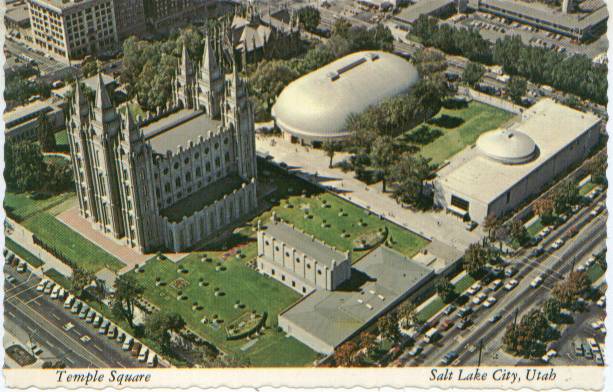 When the late Richard John Neuhaus argued for greater participation in civic life by people of faith in his classic 1984 book, his title was metaphorical. The Naked Public Square warned about the crisis of faith confronting a democracy that legislates religious faith to the periphery of cultural life.
But Kirk Johnson of The New York Times' Denver bureau writes about a literal public square that some say may be too wrapped up with religion in his recent piece, "Project Renews Downtown, and Debate."
When the late Richard John Neuhaus argued for greater participation in civic life by people of faith in his classic 1984 book, his title was metaphorical. The Naked Public Square warned about the crisis of faith confronting a democracy that legislates religious faith to the periphery of cultural life.
But Kirk Johnson of The New York Times' Denver bureau writes about a literal public square that some say may be too wrapped up with religion in his recent piece, "Project Renews Downtown, and Debate."
The public square in question is a 20-acre, $1 billion development project called City Creek Center that is being funded by the Church of Jesus Christ of Latter-day Saints and is located near the church's temple and the adjacent Temple Square.
This story operates on multiple levels – religious, financial and civic. Johnson gives each its due, quoting church officials and members as well as local business and academic experts.
Some residents say the church, by opening its checkbook in a recession, rescued the city when times got tough. The 1,800 construction jobs at City Creek alone have provided a big local economic cushion. Completion of the project–20 acres of retail shops and residential towers–is scheduled for 2012.
"City Creek has been a literal and figurative godsend," said Bradley D. Baird, the business development manager at the Economic Development Corporation of Utah, a private nonprofit group that has no direct involvement with the project.
Other people say that if the new heart of downtown has a strong church flavor, Salt Lake, which has become more diverse in recent years–could veer back toward its roots, for better or worse. About half of city residents are Mormon, according to many estimates, and if many, or most, of the roughly 700 apartment units at City Creek were occupied by Mormon families, the city could have a dramatic new feel.
"Our downtown has become a ghost town in my life–nobody lives there," said Dan Egan, 55, a lawyer and church member who works near the site but lives in the suburbs. "Having several thousand people live down here will have a big impact, and having many of them L.D.S. would be a very interesting thing to see."
Church leaders say they are pursuing no religious agenda with the development, and say they will negotiate special contracts with restaurants that allow the sale of alcohol, which church members are taught to avoid.
Though parts of this story are unique to Salt Lake City and its Mormon establishment, issues raised by the City Creek Center development project are of interest to religious institutions and civic leaders in other cities who are seeking viable urban renewal partnerships at a time when public deficits create the need for creative responses to recurring urban problems such as crime and the loss of jobs and residents to the suburbs.
Although lots of urban churches worry about those issues, the ones that can write a $1 billion check are rare.
"It's certainly one of the largest, if not the largest project in the United States funded by a single entity, and the fact that the entity is a church makes it doubly unusual," said Patrick L. Anderson, the chief executive and founder of the Anderson Economic Group, a Michigan-based real-estate consulting company.
Perhaps Johnson's piece on City Creek Center shows how religious, business and government groups can cooperate in public squares that are both literal and metaphorical.
